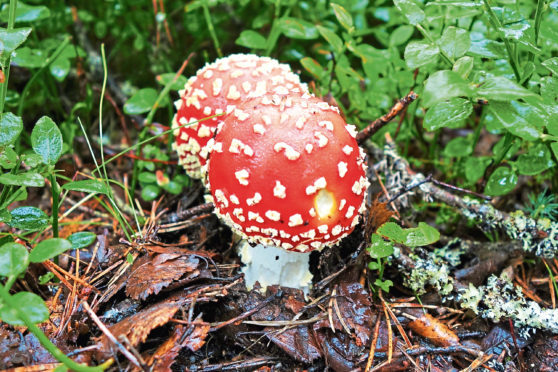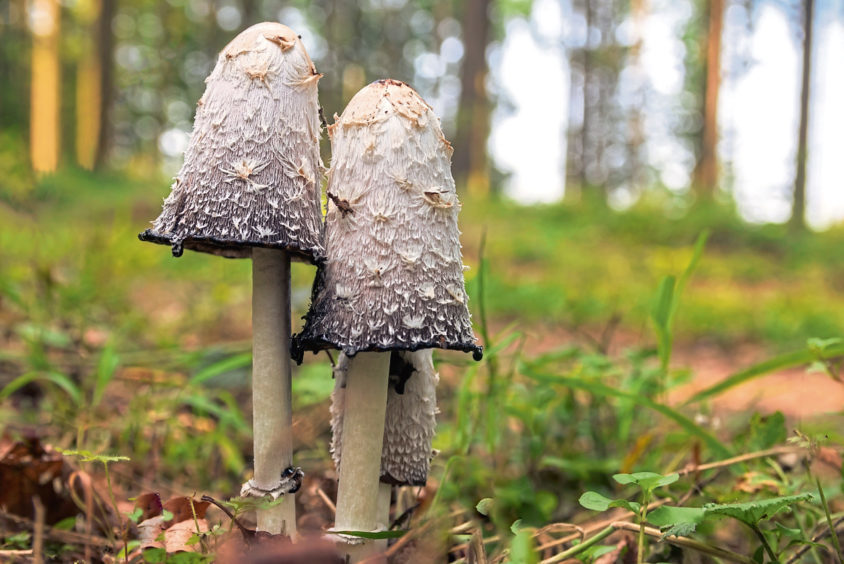Mist swirling over the treetops of Rannoch Forest and the drizzle pit-pattering on my cap, making it a day to cast the eyes downwards as I seek out late summer flowers by this Perthshire track edge.
The pincushion-like purple flowerheads of devil’s bit scabious catch the eye; rich in nectar, they are normally a magnet for butterflies and hoverflies, but the persistent rain ensures that there are few insects about.
The roots of devil’s bit scabious are stubby, and according to legend, this is because the Devil was so furious at the medicinal properties of this plant, that he bit away part of the root, thus giving the flower its name.
As I make my way up the track, there is other colour lying in the shadow of my footsteps – fungi, and lots of it too, so diverse in form and hue, with their umbrella shaped caps glistening with rain drops. All of a sudden, with the weather turning wetter on autumn’s cusp, fungi are appearing in abundance, a natural indicator of the turning of the seasons.
By the foot of a pine tree, a clump of fly agaric toadstools glow like burning coals – the red colour a warning perhaps that they are poisonous and best not eaten, although slugs seem impervious to their toxins and will happily devour them.
Further on, and a section of the path edge is studded with little white egg-shaped fungi, some of which have gone onto to the next stage of their growth, developing caps that ooze with a black inky substance. They are ink caps, a peculiar species where the gills under the caps dissolve at maturity to form a black liquid, which in the past was even used as writing ink.
Ink caps are apparently good to eat – but only on the proviso that they are never accompanied with alcohol, as it could result in vomiting and palpitations! Indeed, the unfortunate side effects may even occur if alcohol has been consumed a few days before, or after, eating ink caps. I’m no fungi expert, so unless you really know your stuff, I would never recommend picking any for food.
Above the bubbling gush of a nearby burn, a harsh screeching from a party of jays pierces the damp air. Jays are incredibly active at this time of year, busily collecting beech-mast and other nuts, which they bury for later retrieval when food is less plentiful.
Jays are one of our most colourful birds, with their lovely soft pink plumage and electric-blue wing patches creating a vibrancy that lingers long in the mind. But the fortunes were not smiling upon the jay when it came to dishing-out the bird song because its call is harsh and strident without much to recommend it.
But it is a sound of autumn; a season of crisper air and turning leaves, and for me, the screech of the jay brings the tantalising promise of a new and unfolding chapter in nature’s calendar.
Info
Fungi are vital to our ecosystems; they are recyclers, nutrient providers for plants and underpin every type of habitat there is. Many have developed mutually beneficial relationships with trees.

